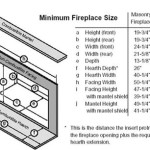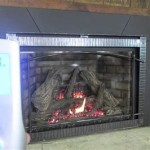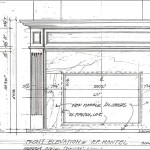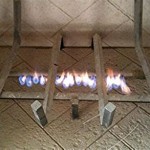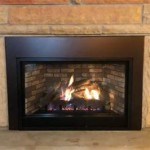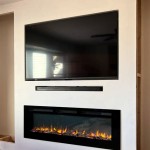Ventless Gas Fireplace Health Issues: A Comprehensive Overview
Ventless gas fireplaces, also known as vent-free gas fireplaces, have gained popularity as a convenient and cost-effective heating solution for homes. Unlike traditional wood-burning or vented gas fireplaces, they do not require a chimney or flue for exhaust. This allows for easier installation and greater flexibility in placement within a home. However, the absence of a venting system raises concerns about indoor air quality and potential health risks associated with the combustion byproducts released directly into the living space.
The primary function of a fireplace, regardless of its type, is combustion. Combustion involves burning a fuel source, in this case natural gas or propane, to generate heat. This process inevitably produces byproducts, some of which can be harmful to human health. While manufacturers claim that ventless gas fireplaces are designed to burn fuel efficiently and produce minimal emissions, it is crucial to understand the potential pollutants released and their possible effects on occupants, especially vulnerable populations.
This article will examine the potential health issues associated with ventless gas fireplaces, focusing on the pollutants they emit and their impact on indoor air quality and human health. It will also discuss factors that influence the severity of these health risks, as well as recommendations for minimizing potential harm.
Understanding the Pollutants Emitted by Ventless Gas Fireplaces
Ventless gas fireplaces, despite being designed for efficient combustion, inevitably release certain pollutants into the indoor environment. The primary pollutants of concern include:
Carbon Monoxide (CO): CO is a colorless, odorless, and tasteless gas that is produced by incomplete combustion of fuels. It is a highly dangerous pollutant because it interferes with the blood's ability to carry oxygen to the body's tissues and organs. Even low levels of CO exposure can cause flu-like symptoms, while higher concentrations can lead to serious health complications, including brain damage and death. Ventless gas fireplaces are equipped with Oxygen Depletion Sensors (ODS) designed to shut off the gas supply if CO levels become dangerously high. However, these sensors are not foolproof and can malfunction, leading to CO poisoning.
Nitrogen Dioxide (NO2): NO2 is a reddish-brown gas with a pungent odor that is formed during high-temperature combustion. It is a respiratory irritant that can exacerbate existing respiratory conditions such as asthma and bronchitis. Prolonged exposure to NO2 can also increase the risk of respiratory infections and contribute to the development of chronic lung disease. Children, the elderly, and individuals with pre-existing respiratory problems are particularly susceptible to the adverse effects of NO2.
Particulate Matter (PM): PM refers to tiny particles suspended in the air that can penetrate deep into the lungs and even enter the bloodstream. These particles can be composed of various substances, including soot, ash, and unburned fuel. Exposure to PM has been linked to a range of health problems, including respiratory irritation, decreased lung function, cardiovascular disease, and even premature death. Ventless gas fireplaces can contribute to indoor PM levels, especially if they are not properly maintained or if the combustion process is incomplete.
Volatile Organic Compounds (VOCs): VOCs are a diverse group of chemicals that evaporate easily at room temperature. They can be released from various sources, including building materials, cleaning products, and combustion appliances. Some VOCs are known to be carcinogenic, while others can cause respiratory irritation, headaches, dizziness, and other health problems. Ventless gas fireplaces can release VOCs as a result of incomplete combustion of fuel or from the materials used in their construction.
Water Vapor: While not typically considered a pollutant, the combustion of natural gas and propane produces significant amounts of water vapor. In poorly ventilated spaces, this excess moisture can contribute to elevated humidity levels, creating a favorable environment for mold growth and other allergens. High humidity can also exacerbate respiratory problems and cause discomfort.
Factors Influencing Health Risks Associated with Ventless Gas Fireplaces
The severity of the health risks associated with ventless gas fireplaces depends on several factors, including:
Fireplace Maintenance: Regular maintenance is crucial for ensuring efficient combustion and minimizing pollutant emissions. This includes cleaning the burner assembly, inspecting the ODS sensor, and ensuring proper gas pressure. Neglecting maintenance can lead to incomplete combustion and increased levels of CO, NO2, and PM.
Room Size and Ventilation: The size of the room where the fireplace is located and the level of ventilation play a significant role in determining the concentration of pollutants in the air. Smaller rooms with poor ventilation will accumulate pollutants more quickly, increasing the risk of exposure. It is essential to provide adequate ventilation when using a ventless gas fireplace, such as opening windows or using exhaust fans.
Fireplace Usage: The frequency and duration of fireplace use also influence the level of pollutant exposure. Frequent or prolonged use will result in higher levels of pollutants in the air, increasing the risk of health problems. It is generally recommended to limit the use of ventless gas fireplaces to short periods and to avoid using them as a primary heating source.
Occupant Sensitivity: Certain individuals are more susceptible to the adverse effects of indoor air pollutants. These include children, the elderly, pregnant women, and individuals with pre-existing respiratory or cardiovascular conditions. These vulnerable populations should take extra precautions to minimize their exposure to pollutants from ventless gas fireplaces.
Altitude: At higher altitudes, the air is thinner, which can affect the combustion process and potentially lead to increased CO production. Ventless gas fireplaces may not be suitable for use in high-altitude locations, or they may require special adjustments to ensure proper combustion.
Fuel Quality: The quality of the fuel used in the fireplace can also impact the emissions. Impurities in the natural gas or propane can lead to incomplete combustion and increased pollutant levels. It is essential to use high-quality fuel from a reputable supplier.
Minimizing Health Risks Associated with Ventless Gas Fireplaces
While ventless gas fireplaces can pose potential health risks, there are several steps that can be taken to minimize these risks:
Choose a Properly Sized Fireplace: Select a fireplace that is appropriately sized for the room in which it will be used. An oversized fireplace can lead to overheating and increased pollutant emissions.
Ensure Proper Installation and Maintenance: Have the fireplace installed by a qualified technician and follow the manufacturer's instructions for maintenance. Regular maintenance, including cleaning the burner assembly and inspecting the ODS sensor, is crucial for ensuring efficient combustion and minimizing pollutant emissions.
Provide Adequate Ventilation: Always provide adequate ventilation when using a ventless gas fireplace. This can be achieved by opening windows or using exhaust fans. Opening a window slightly can significantly reduce the concentration of pollutants in the air.
Limit Usage: Limit the use of ventless gas fireplaces to short periods and avoid using them as a primary heating source. Use them only for supplemental heating and not for extended periods.
Install Carbon Monoxide Detectors: Install carbon monoxide detectors throughout the home, especially near sleeping areas. Test the detectors regularly and replace them according to the manufacturer's instructions. It is recommended to have CO detectors on every level of the home and outside each sleeping area.
Be Aware of Symptoms: Be aware of the symptoms of carbon monoxide poisoning, which include headache, dizziness, nausea, vomiting, and confusion. If you suspect CO poisoning, evacuate the premises immediately and seek medical attention.
Consider Alternatives: Consider alternative heating options that do not produce combustion byproducts, such as electric space heaters or heat pumps. While these options may have their own drawbacks, they do not pose the same risks to indoor air quality as ventless gas fireplaces.
Consult with a Professional: If you have concerns about the safety of your ventless gas fireplace, consult with a qualified HVAC technician or indoor air quality specialist. They can assess your situation and provide recommendations for minimizing potential health risks.
In conclusion, while ventless gas fireplaces offer convenience and aesthetic appeal, it's imperative to acknowledge and mitigate the potential health risks they pose due to the release of combustion byproducts directly into the living space. Proper maintenance, adequate ventilation, limited usage, and the installation of carbon monoxide detectors are crucial steps in ensuring a safer indoor environment. Prioritizing these measures safeguards the health and well-being of occupants, particularly vulnerable populations.

Are Vent Free Gas Fireplaces Safe Ventless

Ventless Gas Fireplace Is It Safe
.aspx?strip=all)
Ventless Fireplaces Explained Safety Of Vent Free Fires

A Ventless Gas Fireplace Doesn T Belong In Your Home Greenbuildingadvisor

ᑕ❶ᑐ Ventless Gas Fireplace Insert Disadvantages Of Use

Considering A Ventless Gas Fireplace Here S What You Need To Know Bob Vila

Ventless Gas Fireplace Propane

A Ventless Gas Fireplace Is Liability Energy Vanguard

What Is A Ventless Fireplace Doctor Flue Inc

With Vent Free Fireplaces Safety Is Primary Concern


